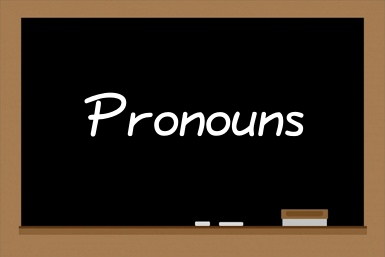Swedish Pronouns

In this lesson you'll learn the Swedish personal and demonstrative pronouns. Personal pronouns in Swedish have a subject, object, and possessive form.
Personal Pronouns
| Swedish Subject | Swedish Object | Swedish Possessive | English |
| jag | mig | min, mitt, mina | I |
| du | dig | din, ditt, dina | you (one person) |
| han | honom | hans | he |
| hon | henne | hennes | she |
| den, det | den, det | dess | it |
| vi | oss | vår, vårt, våra | we |
| ni | er | er, ert, era | you (plural) |
| de | dem | deras | they |
The g in jag is often not pronounced. Mig is pronounced may and dig is pronounced day. De is often pronounced dom or in some areas dee.
The possessive forms of some pronouns vary depending on whether the noun that follows is common, neuter, or plural.
Examples
| Mina händer är kalla | My hands are cold |
| Mitt bord är nytt | My table is new |
| Min stol är bekväm | My chair is comfortable |
Reflexive Pronouns
Reflexives pronouns are used when the object of a sentence is the same as the subject of the sentence. In Swedish there are many verbs that require using a reflexive pronoun. These are called reflexive verbs.
The following table lists the reflexive pronouns.
| Swedish | English |
|---|---|
| mig | myself |
| dig | yourself |
| sig | himself/herself/itself |
| oss | ourselves |
| er | yourselves |
| sig | theirselves |
Demonstrative Pronouns
Demonstrative pronouns are pronouns that point to a specific object. The demonstrative pronouns in English are this, these, that, and those.
| Swedish | English |
|---|---|
| den här / det här | this |
| de här | these |
| den där / det där | that |
| de där | those |
Examples
| Jag vill ha den här | I want this one. |
| Jag vill ha de här | I want these ones |
| Jag vill ha den där | I want that one |
| Jag vill ha de där | I want those ones |